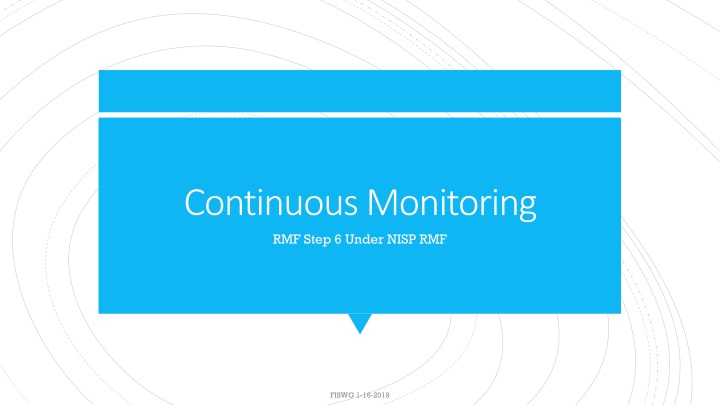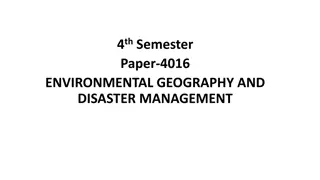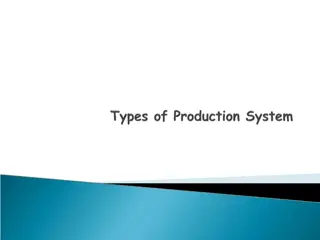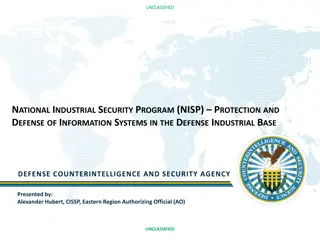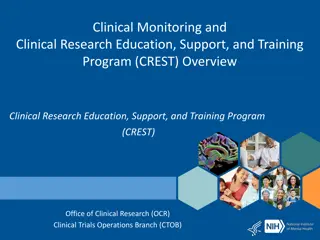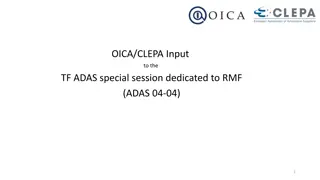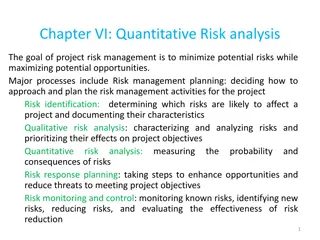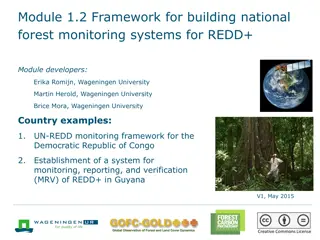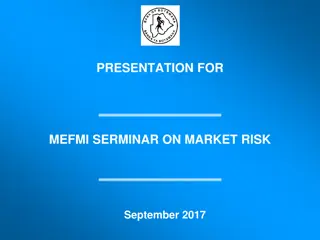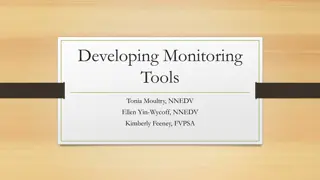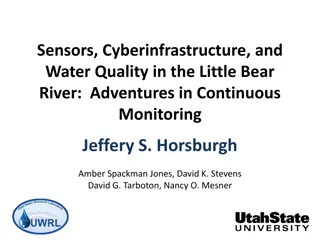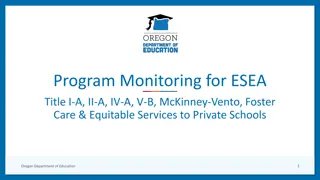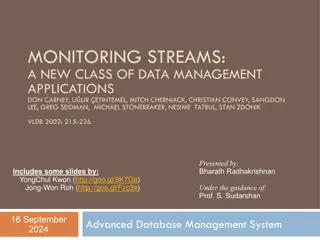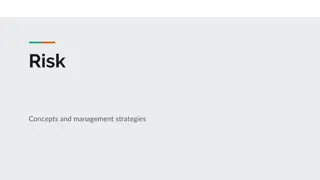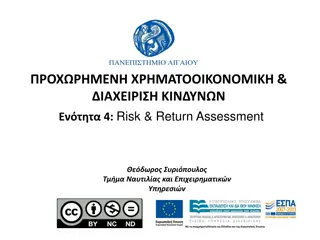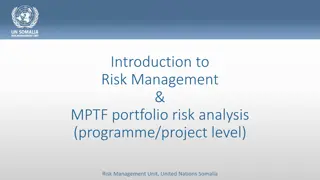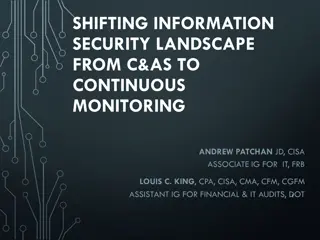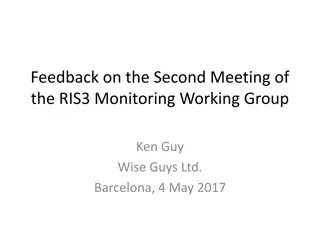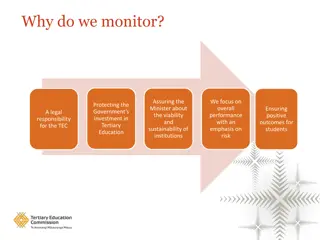Continuous Monitoring in Risk Management Framework (RMF)
Explore the continuous monitoring process in the Risk Management Framework (RMF) under the NISP RMF FISWG. Learn about the six steps in the RMF process, DSS-provided RMF guidance, and an overview of RMF continuous monitoring strategies and security control families. Discover how to outline DSS RMF processes, SSP workbook formats, and DSS DAAPM selected security controls with recommended continuous monitoring frequencies.
Uploaded on Aug 03, 2024 | 2 Views
Download Presentation

Please find below an Image/Link to download the presentation.
The content on the website is provided AS IS for your information and personal use only. It may not be sold, licensed, or shared on other websites without obtaining consent from the author.If you encounter any issues during the download, it is possible that the publisher has removed the file from their server.
You are allowed to download the files provided on this website for personal or commercial use, subject to the condition that they are used lawfully. All files are the property of their respective owners.
The content on the website is provided AS IS for your information and personal use only. It may not be sold, licensed, or shared on other websites without obtaining consent from the author.
E N D
Presentation Transcript
Continuous Monitoring RMF Step 6 Under NISP RMF FISWG 1-16-2019
Recap the Six Steps in the RMF Process DSS-provided RMF Guidance and Resources Overview of an RMF Continuous Monitoring (CONMON) Strategy Objectives Example of CONMON Tracking Document Overview of the 18 Security Control Families Review and Discuss Selected Security Controls FISWG 1-16-2019
The Six RMF Steps (from DAAPM v1.3) FISWG 1-16-2019
Outlines DSS RMF processes and procedures Defines RMF roles and responsibilities Identifies minimum training requirements for ISSM/ISSO DSS Assessment and Authorization Process Manual (DAAPM) v1.3 Provides configuration management guidance Establishes the significance of Continuous Monitoring (CONMON) in DAAPM RMF Step 2/Task 4 where it states, in part: Ongoing monitoring of the security controls is a critical part of risk management. Effective monitoring includes, but is not limited to, configuration management and control, security impact analyses on proposed changes, assessment of selected security controls, and security status reporting. FISWG 1-16-2019
Provides a simple six-tab MS Excel workbook format for completing an SSP The overlay provides pre-selected security controls for SUSA/MUSA/Isolated Networks based on DSS Moderate/Low/Low control selection The DSS SSP Overlay System Security Plan (SSP) Excel Version 1.2 Based on Moderate/Low/Low Certain controls not selected for a system type are tailored out by default and will have a under the applicable system type (MLL) Tab 5 on the Excel version of the SSP overlay is used to define a CONMON strategy for each assigned control FISWG 1-16-2019
Provides the DSS DAAPM selected security controls in a columnar format for easy reference Shows the DSS recommended continuous monitoring frequency in the left column DAAPM Appendix A Security Controls v1.2 Includes supplemental DSS-specific guidance for controls in the left column (for selected controls) FISWG 1-16-2019
DAAPM Appendix A DAAPM Appendix A Sample Control NIST Guidance is the primary source for these columns DSS Guidance Good resource for DSS recommended CONMON frequency Additional DSS supplemental guidance is not included for some of the controls FISWG 1-16-2019
Building a CONMON Strategy in the DSS SSP Overlay SSP Overlay, TAB 4 SecCtrls Column Q is Used to Define CONMON Frequency SSP Overlay, TAB 5 ConMon Strategies Column E is Populated based on SecCtrls Tab Input Must describe how your facility completes the required monitoring. Documentation will likely be needed. FISWG 1-16-2019
Controls are assigned annual, semi-annual, quarterly, monthly, or weekly CONMON frequency Tracking mechanism and documentation largely left to the facility/ISSM CONMON Tracking No Defined Form/Format Best practice is to coordinate with the assigned ISSP for buy-in when possible FISWG 1-16-2019
CONMON Tracking CONMON Tracking Record Example FISWG 1-16-2019
Security Control Families 380+ RMF controls are divided into18 groups or families Many control families relate to policy, training, physical security, etc (AC) Access Control (MP) Media Protection (AT) Awareness and Training (PE) Physical and Environmental Protection (AU) Audit and Accountability (PL) Planning (CA) Security Assessment and Authorization (PM) Program Management (CM) Configuration Management (PS) Personnel Security (CP) Contingency Planning (RA) Risk Assessment (IA) Identification and Authentication (SA) System and Services Acquisition (IR) Incident Response (SC) System and Communications Protection (MA) Maintenance (SI) System and Information Integrity FISWG 1-16-2019
Security Control Familiescont (AT) Awareness and Training NOTE: This is only a small sampling of controls!!! FISWG 1-16-2019
Security Control Familiescont (AT) Awareness and Training FISWG 1-16-2019
Security Control Familiescont (CP) Contingency Planning NISPOM, 8-302 c states: Contingency Planning. When contractually required, contractors will establish, maintain, and effectively implement plans for emergency response, backup operations, and post-disaster recovery operations for ISs to ensure the availability of critical information and continuity of operations FISWG 1-16-2019
Security Control Familiescont (CP) Contingency Planning FISWG 1-16-2019
Security Control Familiescont (PE) Physical and Environmental Protection FISWG 1-16-2019
Security Control Familiescont (PE) Physical and Environmental Protection Best practice dictates that a KVM switch used across classifications or security boundaries should conform to the NIAPapproved Protection Profile (PP) for peripheral sharing switches FISWG 1-16-2019
Security Control Familiescont (PE) Physical and Environmental Protection FISWG 1-16-2019
Security Control Familiescont (PS)Personnel Security FISWG 1-16-2019
Security Control Familiescont (PS)Personnel Security FISWG 1-16-2019
Security Control Familiescont (PS)Personnel Security FISWG 1-16-2019
Security Control Familiescont (SA)System and Services Acquisition FISWG 1-16-2019
Security Control Familiescont (SA)System and Services Acquisition FISWG 1-16-2019
Security Control Familiescont (SA)System and Services Acquisition FISWG 1-16-2019
Security Control Familiescont (SA)System and Services Acquisition FISWG 1-16-2019
